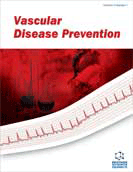
Abstract
Insulin-like Growth Factor-1 (IGF-1) may be considered as a mediator of vascular disease. Its mitogenic effects (e.g. stimulation of vascular smooth muscle cells proliferation and migration) represent key events in the formation of atherosclerotic plaque as well as in restenosis after angioplasty. Additionally, IGF-1 concentration in vascular smooth muscle cells from atherosclerotic or restenotic plaque in patients with coronary heart disease is significantly higher than in healthy humans. More recently increasing experimental and clinical evidence contradicts the concept that IGF-1 is a proatherosclerotic factor. Indeed, epidemiological studies demonstrate that IGF-1 may be a vascular protective molecule. The suggested mechanisms by which IGF-1 may express its beneficial effects on the vasculature include: 1) stimulation of vasodilatation by intracellular calcium reduction through potassium channels activation, 2) stimulation of nitric oxide production by endothelial end vascular smooth muscle cells, 3) promotion of insulin sensitivity resulting in prevention of postprandial dyslipidemia, 4) inhibition of peripheral resistance attributed to influencing endothelin action, and, 5) protection of plaque instability and rupture through inhibition of oxidized-low density lipoprotein cytotoxic actions on vascular smooth muscle cells. We review the data from clinical and experimental studies concerning the role of IGF-1 in vascular disease prevention and management.
Keywords: Insulin-like growth factor -1, cardiovascular disease, hypertension, atherosclerosis, restenosis



